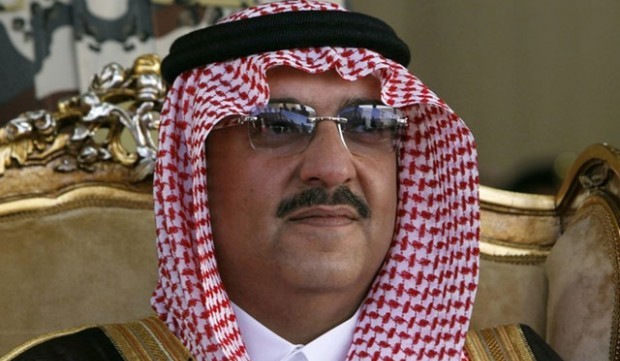
File photo of Prince Mohammed bin Naif (AAA)
Riyadh, Asharq Al-Awsat—Custodian of the Two Holy Mosques, King Abdullah Bin Abdulaziz, appointed Prince Mohammed Bin Naif Bin Abdulaziz as Saudi Arabia’s tenth Interior Minister yesterday. Prince Mohammed Bin Naif takes up this ministerial portfolio during a time when the Kingdom is beset by intermittent obstacles with the objective of ensuring safety and security across the country.
The newly appointed Interior Minister is not only known as a strong opponent of Al Qaeda and terrorism, he also initiated a number of programs to rehabilitate those with extremist ideology, such as the successful Munasaha program.
Prince Mohammed Bin Naif served as Assistant Minister of Interior for Security Affairs between 1999 until 2012, during which time he worked tirelessly with security officials across the world to ensure national security and safety. America’s MSNBC network described the Saudi minister as “the General of War on Terrorism.” While US and European officials have described him as the commander of one of the most effective operations to combat terrorism in the world. His operations are based on the principle of tolerance and containing criminals and those who have gone astray, rather than abusing them. He sought to ensure that all those arrested and detained in this regard were granted their full rights and were treated equitably, whether this was trial or rehabilitation.
Prince Mohammed Bin Naif stood with his father, late Crown Prince and Interior Minister Prince Naif Bin Abdulaziz, to eliminate terrorist cells – and their sources – that sought to target Saudi Arabia with a series of attacks beginning in 2003. During this period, the Saudi Interior Ministry relentlessly pursued Al Qaeda cells and extremist ideologues across the Kingdom. Crown Prince Naif Bin Abdulaziz and Prince Mohammed Bin Naif’s success in this regard ensured that Al Qaeda elements fled Saudi Arabia for other countries following a strong crackdown and thanks to the vigilance of the Saudi authorities.
The Saudi Interior Ministry’s efforts protected the security and safety of the country and its citizens, working diligently to uncover and expose Al Qaeda terrorist plots targeting Saudi Arabia and its allies. CNN, quoting US intelligence sources speaking on the condition of anonymity, revealed that the uncovering of a 2010 Al Qaeda plot to blow up an airplane travelling to the US from Yemen was initiated by information from Saudi Arabia. A White House source, speaking to Asharq Al-Awsat on the condition of anonymity following this plot, revealed that “over many years, the United States and the Kingdom of Saudi Arabia have cooperated closely in the war on terror. The US government is in debt of the Saudi government for its assistance in this regard. We look forward to further cooperation between the two countries.”
In addition to this, the New York Times reported that “Saudi intelligence officials warned the United States in early October that Al Qaeda’s affiliate in Yemen was planning a terrorist attack using one or more aircraft, three weeks before a plot to send parcel bombs on cargo planes was foiled at the last minute.”
Prince Mohammed Bin Naif survived an assassination attempt against him in 2009 when a militant who was supposed to be surrendering himself to the Prince blew himself up. Then Saudi Assistant Minister of Interior for Security Affairs had been trying to secure the surrender of Abdullah Bin Hassan Bin Taleh Assiri, who was included on the Interior Minstry’s list of 85 wanted suspects for terrorism related charges. Assiri claimed to be carrying a message from a number of other suspects who were seeking guarantees of safety before returning to Saudi Arabia, an operation that Prince Mohammed Bin Naif was overseeing. The now Saudi Interior Minister personally spoke to Assiri on the phone to reassure him, and even sent a private jet to pick him up. Prince Mohammed Bin Naif only suffered superficial injuries in the attack, and apart from the bomber – who was killed – there were no other serious casualties.
Prince Mohammed Bin Naif Bin Abdulaziz was born in 1959 in the city of Jeddah. He has a BA degree in Political Science and was appointed Assistant Minister of Interior for Security Affairs in 1999. He is also a member of the National Anti-Narcotics Committee and the Permanent Committee of the Economic Council.
